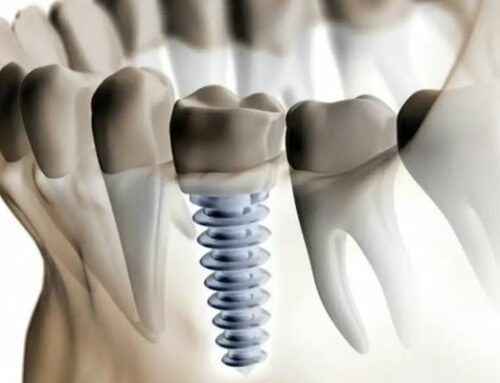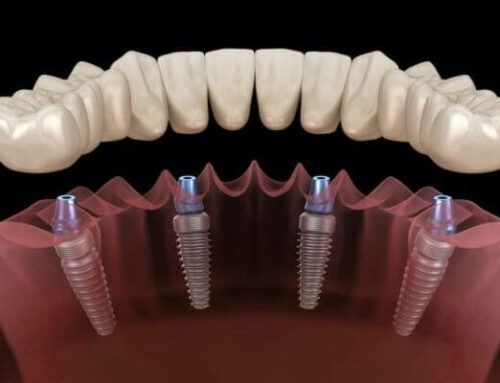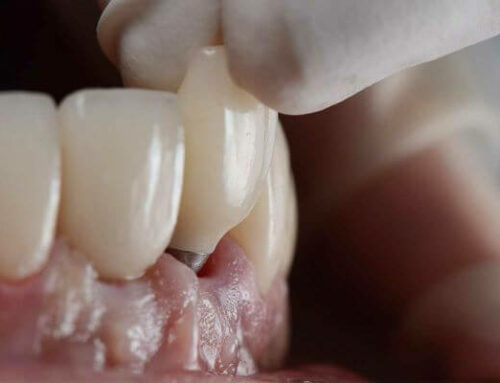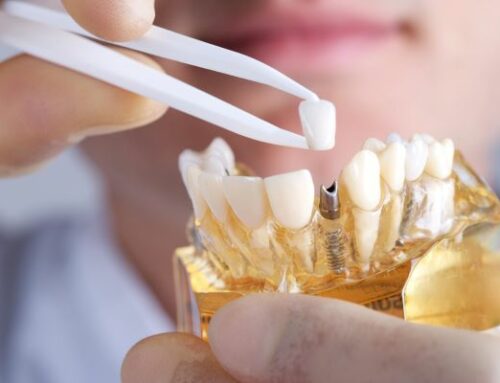Can dental implants be removed? How can I remove a dental implant? What are the reasons for having a dental implant removed? Is it a long process?
If you think your implants might need to be removed, you probably have a lot of questions. Dental implants are one of the first-choice surgeries to replace missing teeth. It provides a permanent and strong alternative to replacing your natural teeth. However, sometimes complications can occur after oral surgery and you may experience certain symptoms. From time to time, you may need to remove or replace your implants.
In this article, you’ll learn everything you need to know about dental implant removal.
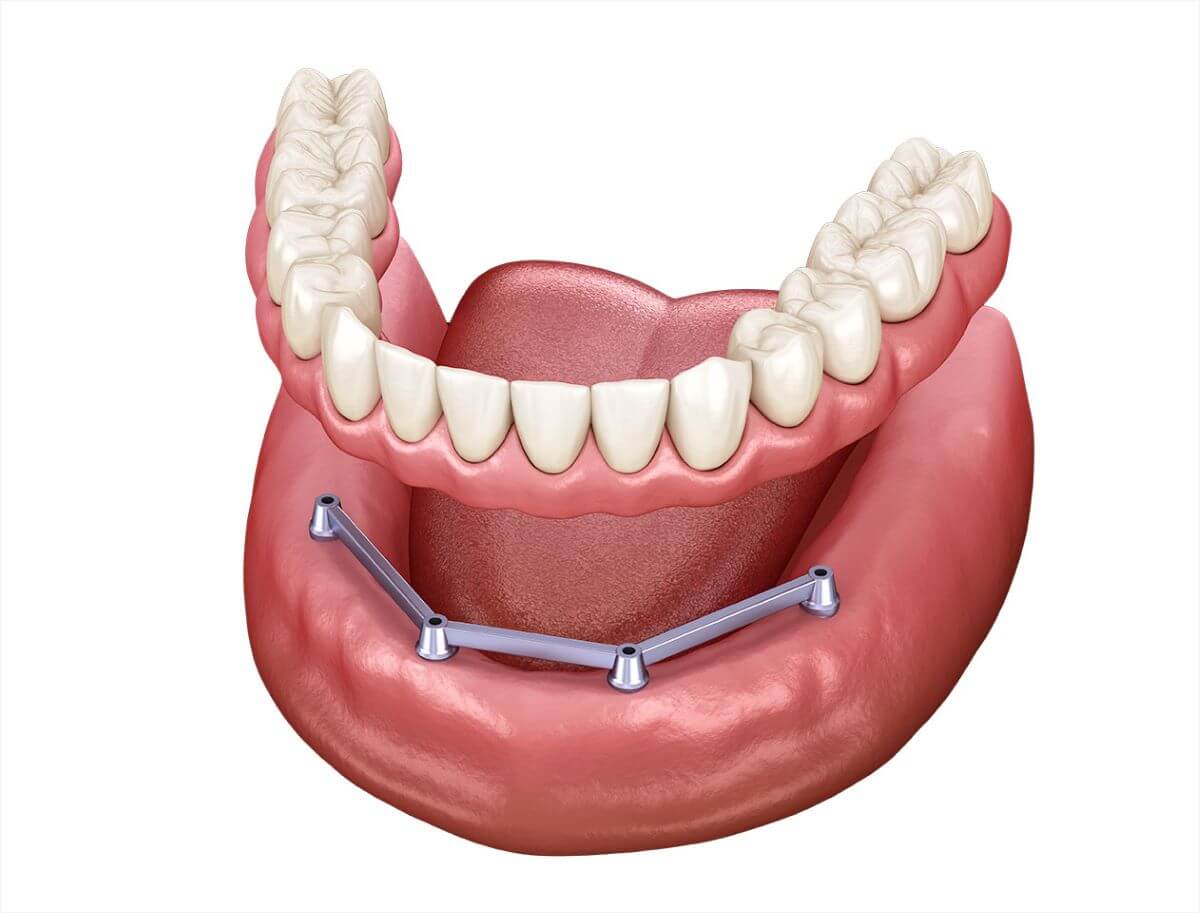
1. Can dental implants be removed? Here’s why!
First, you might be wondering, can you even have implants removed? You may have questions because dental implants are a permanent tooth replacement option. Due to the high success rate of implant surgery, implant removal is usually not the procedure of choice. However, when you have certain conditions, it is possible and necessary to have the implant removed.
We can identify several reasons why implants may need to be removed.
1) Repositioning implants
Sometimes, implants can become misplaced in your mouth/jawbone due to initial placement errors. This can cause you to bite incorrectly, which can be uncomfortable and can lead to various health problems. You may need revision implant surgery to fix the misalignment, which involves removing the implant and repositioning it.
Dental Implant Movement
You may feel a slight movement of the dental implant as it blends into your jawbone. During the first three months after implant surgery, if the implant lacks stability, it may not blend into the bone. In this case, you may experience soft tissue ingrowth.
2) Removed due to implant rejection
Implant failure can also occur if the patient’s body rejects the implant. Since it is a foreign body, the body will have a certain reaction to it. Symptoms of implant rejection include increased pain at the implant site, fever, and chills. This can happen for a number of reasons, one of which is a medical condition. These medical conditions may include:
- celiac disease
- metal allergy
- Cancer (neck and head cancers)
- diabetes (type 1 and type 2)
- lupus
- Rheumatoid Arthritis
Your dentist will usually take a detailed medical history to prevent this type of rejection. However, if you were not aware of these conditions beforehand, sometimes they only become clear after surgery. In this case, removal of the implant may resolve the rejection symptoms, and you should discuss other alternatives to implants with your dentist.
Implants fail due to infection
Plantation failure may occur much earlier or later. Early implant failure occurs when the implant does not attach properly to the jawbone. This can happen in the first few months after surgery. Late implant failures typically occur in patients more than a year after implantation. Early or late implant failure may also occur due to infection at the implant surgical site. Peri-implantitis is an infection around an implant. Multiple research papers show that peri-implantitis is the number one reason people need to have their implants removed.
The infection attacks the gum tissue around the implant site, causing inflammation and swelling of the hard and soft tissues around the implant. Bacteria that build up at the implant site can cause this infection. Infections around implants can be very painful and, if left untreated, can lead to bone loss. Some symptoms of an implant site infection are:
- bleeding gums,
- inflammation
- pus/discharge
- pain
- fever
- bad breath
3) Loose implants need to be removed
If you apply too much force to the implant (while chewing, clenching, or grinding your teeth), it may loosen. It can also occur due to improper implant placement or component failure. In rare cases, the crown of a dental implant can also loosen and expose the base of the implant. This can negatively affect the integration of the implant into the jawbone and cause the implant to fail.

4) Removed due to sinus problems
If you experience chronic sinus problems, dental implants may be to blame. To get rid of these, you need to remove the implant and replace it. If dental implant surgery is performed in the upper jaw, sinus disease and/or bone deficiency can make the procedure more difficult. In this case, your dentist may recommend sinus enlargement surgery. The bone is lifted into the sinus cavity during this procedure. This makes room for the bone graft, which provides more bone to support the implant.
5) Removal due to nerve damage
Nerve damage may result if your dentist places the implant too close to the nerve. Numbness or tingling of the tongue, lips, gums, or face is some signs of injury. This is a very painful situation and you need to seek professional help right away. In this case, your dentist will remove the implant and replace it after the nerve damage has healed.
6) Weak jawbones may be the cause
If your dentist places the implant in an area of the jawbone that is weak during the initial placement, there is a higher chance of failure. Likewise, if you don’t have enough bone to support a dental implant, it will most likely fail. Because without adequate bony support, it cannot integrate properly with the jaw.
7) Tobacco use
You are more likely to experience dental implant failure if you use tobacco products. Smoking can trigger implant site infections, restrict blood flow to the area, and cause complications. Studies have shown that smokers have a much higher rate of osseointegration failure of dental implants. Smoking also adversely affects oral hygiene maintenance and peri-implantitis risk.
8) Poor oral hygiene
Practicing good oral hygiene habits is essential to keep your implants healthy. Poor oral hygiene can lead to infections that can lead to bone loss if you don’t take care of your oral health. You should not have dental implants if you have a medical condition that affects your mobility and prevents you from cleaning your teeth properly.
9) Other medical conditions
Osseointegration may be more difficult if you have an underlying disease that affects bone strength and density, such as osteoporosis. In this condition, you may experience bone loss. Bones may become weak and fracture. Healthy bone is very important for implant survival. Other conditions may include certain autoimmune diseases such as rheumatoid arthritis and diabetes. These conditions can affect your body’s recovery time, which can affect a healthy period of osseointegration.
Side effects of some medicines
If you are currently using certain medications for another condition, it may affect the success rate of dental implants. For example, one research paper showed that heartburn medications can negatively affect the growth of new bone, which is vital for your implants. Another paper showed a similar pattern in people taking certain antidepressants.
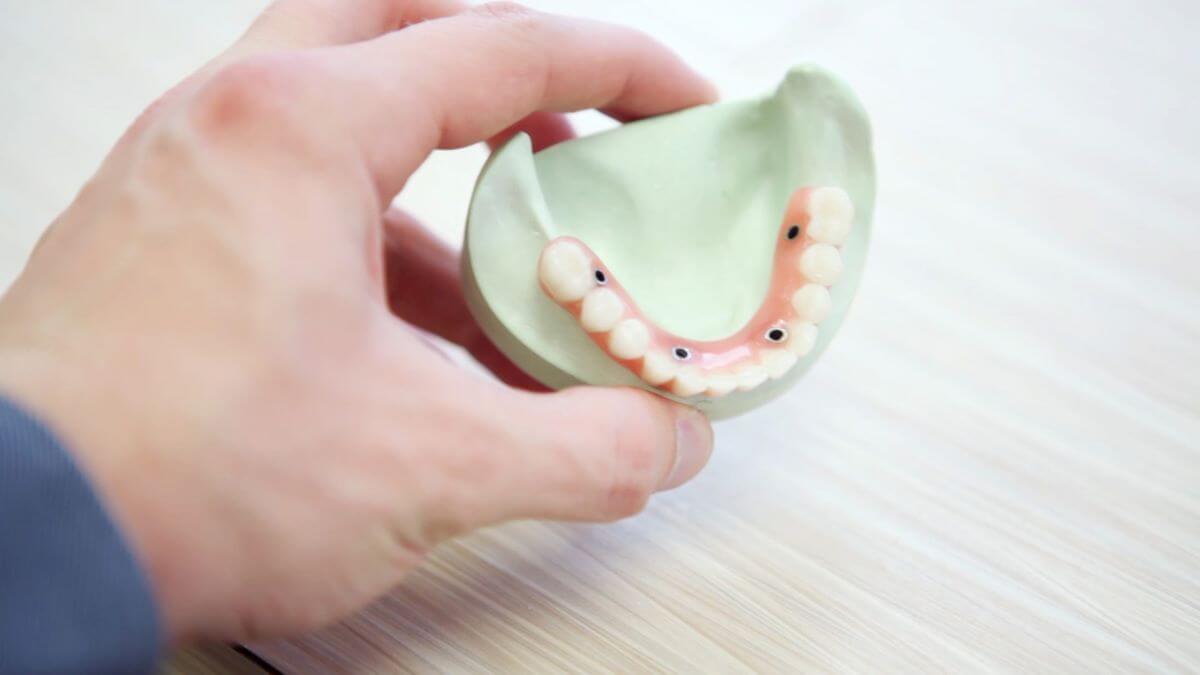
2. How do you know if your implant has failed?
Implant failure due to the above reasons will have some common symptoms. We have touched on them a little while explaining the reasons behind the failure of dental implants. Some symptoms to look out for are:
- severe pain
- Inflamed gums
- gum disease and inflammation
- malocclusion
- difficulty chewing
- loose implant
- allergic reaction
If you experience the above symptoms, make an appointment with your dentist immediately.
3. Tooth extraction process
The complexity of dental implant removal depends on how well the implant fits into the jawbone. The implant removal process is much simpler if the implant is not fully integrated into the jawbone. There are several implant removal methods to remove failed dental implants. Here, we’ll discuss the two most common.
1) Dental Implant Removal Using Fluted Drills
The first technique many dentists use to remove dental implants is a device called a trephine (trephine). This method is the most common method of removing implants and has been used by many dentists for decades. During this procedure, the patient will be under anesthesia.
The dentist will loosen the implant by cutting about 1 millimeter (or less) of bone tissue. They will then examine the structure of the bone to see if any dental bone grafts are needed to replace the bone. After dental implant removal, you can get replacement implants after the healing process has been completed.
2) Dental Implant Removal Using an Adapter
By using an adapter, dentists can remove implants without cutting any bone tissue. The adapter generates high torque to remove/loosen the implant from the bone. This method is much less invasive, and many researchers recommend it for less invasive resection procedures. The downside to the adapter method is that your dentist may not be able to use it in some situations. Sometimes they need to remove some bone tissue if the implant is integrated into the jawbone. However, if they can use it to remove your implants, you won’t need to wait for implant replacements.
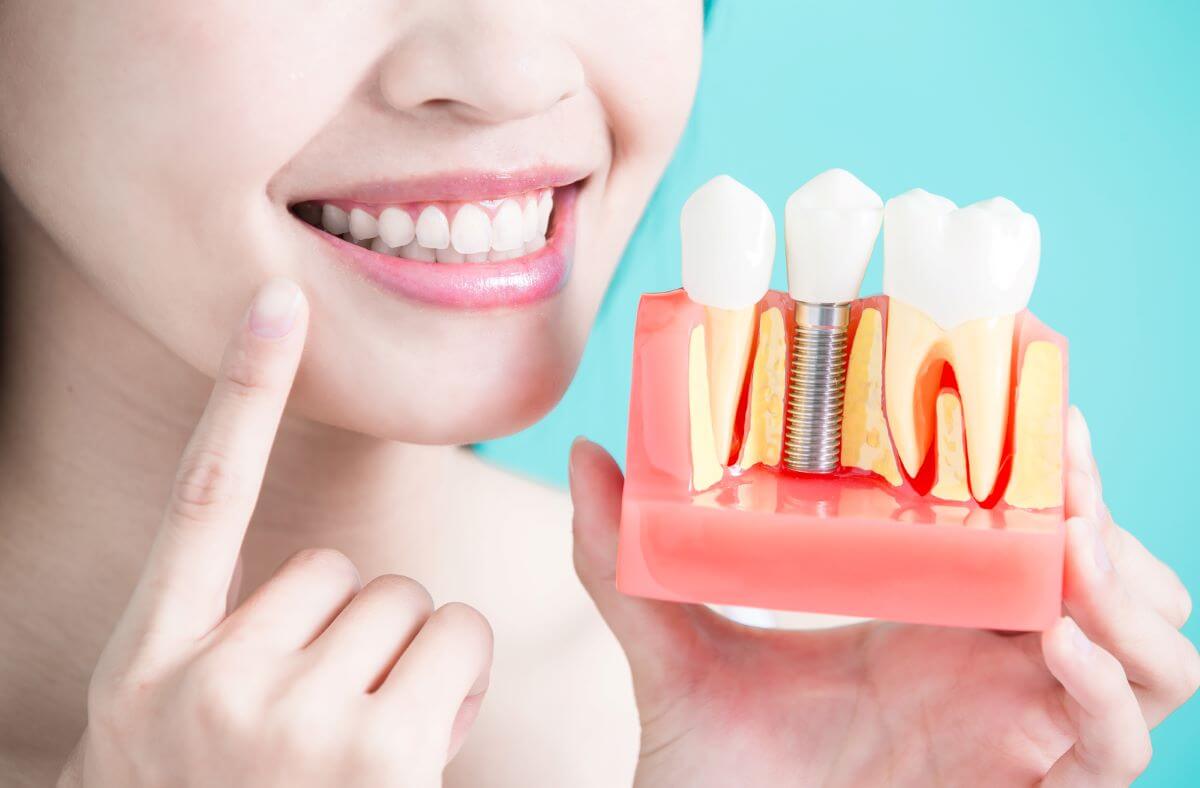
3) What is the best implant alternative for you?
After your implant is removed, you will need to replace it. You can replace your implants with another type of implant or dentures.
You may have to wait a while after dental implant removal surgery for new implants to be placed. You may need a bone graft after removal surgery, which means you will have to wait up to 4 to 6 months after surgery. Your dentist may prescribe mechanical cleaning or antibiotic treatment depending on the surgical site infection.
In some of the above cases, such as with adapter removal, you can get a new implant while removing the old one. You can get a new implant right away if the implant site is clean and free of infection, and your bone stock is adequate and dense enough to support the new implant.
Depending on the condition of your mouth and gums, your dentist may choose other options, such as dentures and bridges.
A bridge is a restorative device that fills the gap left by a missing tooth. Some bridge types are:
- Resin-bonded bridges: These bridges have “wings” on either side that are held in place with resin to the original teeth. They don’t need to be sanded like traditional bridges.
- Conventional Bridges: These bridges are fixed and use the existing teeth as the support for the restoration.
- Cantilever Bridge: A cantilever bridge differs from a traditional cantilever bridge in that with a cantilever bridge, the bridge supports one side of the teeth.
- Partial Dentures: Partial dentures are removable alternatives that are much less expensive than implants. During this procedure, replacements for missing teeth are attached to gum-colored plastic bases. Its feel is reminiscent of stationary pallets.
4) What is the average cost of dental implant removal surgery?
The cost of dental implant removal surgery depends on your circumstances, such as the reason for the removal, the expertise of the dentist, the location of the dental office, and whether or not bone grafts are necessary. It can range from $300 to $1000.
4. tooth extraction side effects
Usually, the implant removal procedure does not lead to any complications. The most common postoperative complication patients experience is some degree of pain and discomfort. In other mild cases, there may be bone loss or microcracks in the jaw. Your dentist will best assess your specific situation before and after surgery.
Nerve damage and surrounding tooth damage are also less likely. An experienced doctor will know how to avoid it.
1) Is tooth implant removal painful?
During the procedure, you will receive local anesthesia. Since your dentist will give you a sedative, you won’t feel any pain during the implant removal. Some pain and discomfort after surgery are common but should not be excessive. If you experience too much pain, consult your dentist immediately.
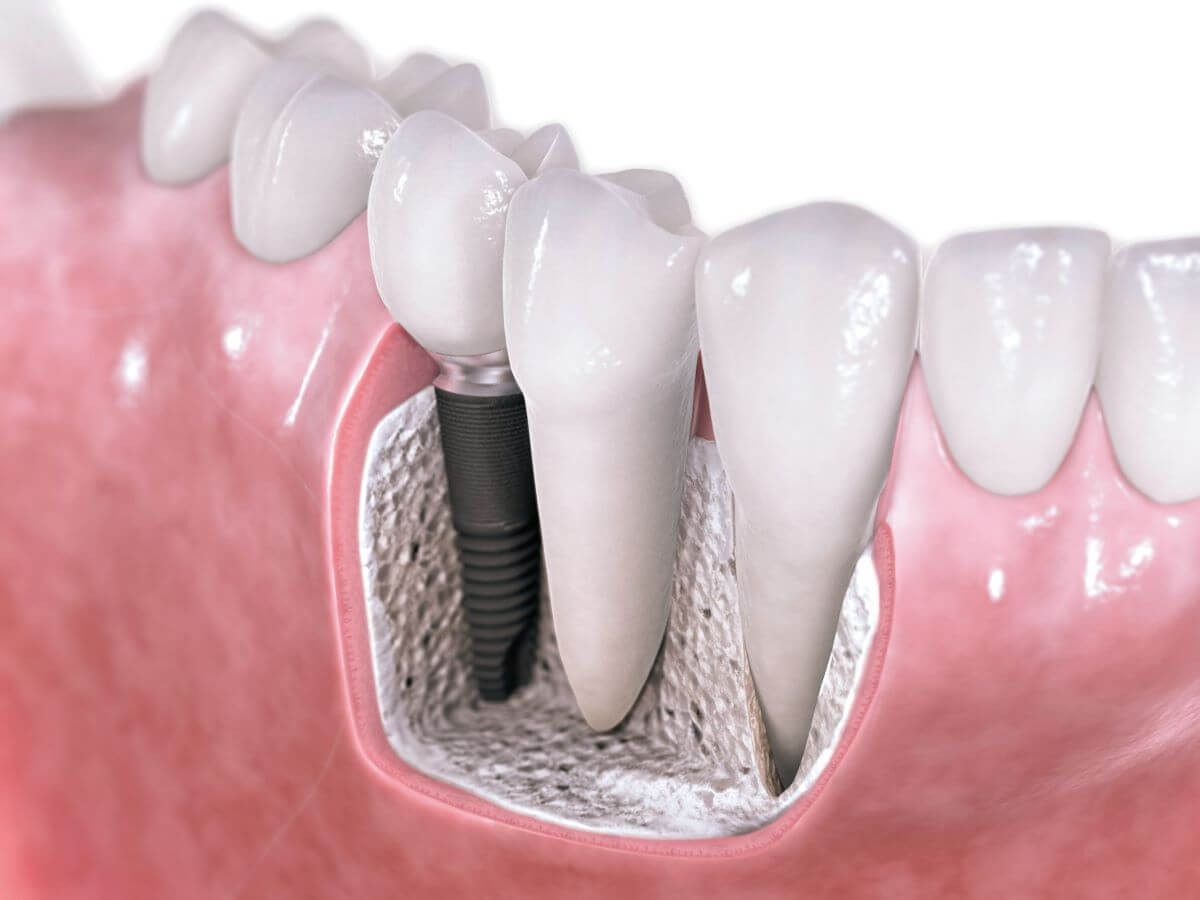
5. How to take care of your mouth after dental implant removal
Oral care after dental implant removal is something you should be familiar with. This is very similar to the aftercare of dental implant surgery. Check out our article on aftercare for detailed instructions. In short, avoid touching the implant site, avoid cold drinks and food, stick to a soft food diet for the recommended amount of time, etc. Recovery time after surgery is about five days. During this time, you are likely to experience some pain and discomfort. You can relieve pain with any prescription or over-the-counter pain reliever. Depending on your condition, your dentist may prescribe a course of antibiotics.
1) How to minimize the risk of dental implant failure?
While you can do your best by following your dentist’s instructions and practicing good oral habits, you cannot completely prevent implant failure. Some of the causes we mentioned above are biological complications. It is impossible to control or prevent them.
6. In conclusion
In this article, you learned about some of the reasons why dental implants may fail, how to recognize the symptoms of these specific conditions, and the methods to use during removal.
In summary, peri-implantitis is the most common reason for implant removal. Both early and late failure of implants can occur due to infection. After consulting with your dentist about your discomfort with implants, you can choose a grafting method (if you need one). The drilling method is the more commonly used dental implant removal technique, but doctors consider it a more invasive procedure. The adapter method (reverse torque) is a more conservative method and uses more advanced techniques that are increasingly common.
Consult a dental professional to see if implant removal is the best option for you.
